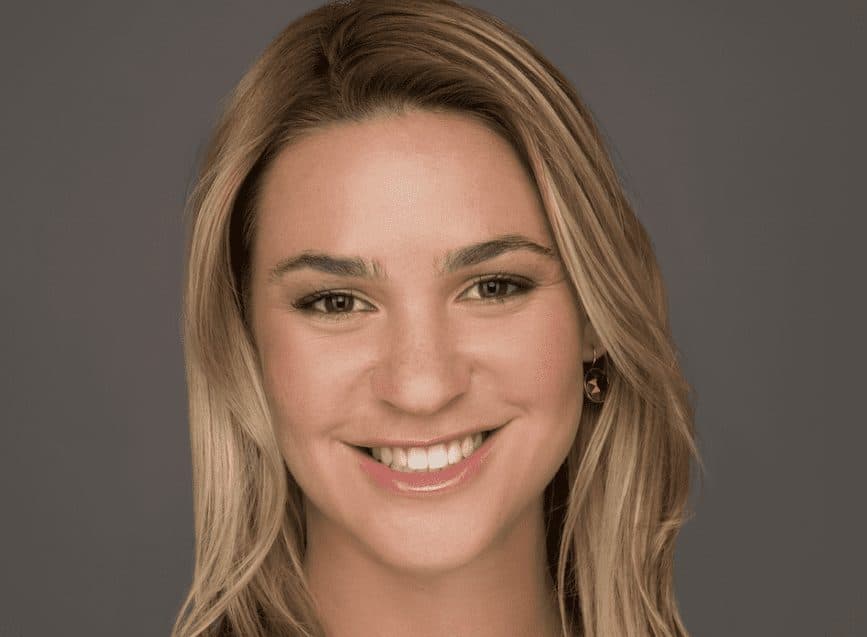Gone Crypto: Asset Management to Building Crypto Securities
Valkyrie CEO Leah Wald speaks to Blockworks about her journey in the digital assets industry from Africa to Wall Street.

- At only 19, Wald was able to get a first hand look at how fintech changes communities when she started with the World Bank
- After learning about GBTC, Wald and her partner were determined to build a better, institutional version that traded at net asset value
Like everyone else in the world, Valkyrie CEO Leah Wald wishes she had entered the crypto space sooner.
“I didn’t work in bitcoin way back then,” she said. “But, from my other experiences, I was able to see what it could do for the world.”
Wald started at the World Bank while she was still in college studying international political economics.
“When I was 19, I was working at the World Bank, I was very lucky,” said Wald. “I was working in the vice president of the Africa region’s office and at the time, some of the colleagues in the office were working on something called M-Pesa.”
Africa’s first digital currency
M-Pesa (‘M’ stands for ‘mobile’ and ‘pesa’ means money in Swahili) is a mobile phone-based transfer, payment and micro-financing system that was designed to expand banking opportunities to rural regions. It was launched in 2007 in Kenya and by 2010, when Wald was with the World Bank, M-Pesa was the greatest SMS-based financing system in the developing world.
“It was really the first time that I saw how well microfinance and a permissionless system could work,” Wald said. “So when I learned about bitcoin, to be honest, the value proposition didn’t seem extraordinary, it seemed very natural and made complete sense,”
Later, when Wald started learning about digital assets, her experience with M-Pesa helped her to imagine how digital assets could change the world.
“Bridging that gap in international development with communities that don’t have access to the traditional banking systems and are either unbanked or left out or opted out from all traditional financial vehicles, that use case for bitcoin has always resonated with me,” said Wald.
Leah Wald’s journey from M-Pesa to building a Better GBTC
Wald was at Thanksgiving dinner with her friends and family when she started talking to Tyler Jenks, former president and CIO of Lucid Investment Strategies, about bitcoin. He was very active in bitcoin, Wald said, and the two started talking about the Grayscale Bitcoin Trust.
“The thing is, that was only Bitcoin security at the time,” Wald said, but she wanted in. Wald started working in bitcoin asset management full-time in 2017.
“Tyler and I wanted to make Lucid into the top specialized Asset Management shop in investing in GBTC,” said Wald. “I built that up with Tyler and really expanded lucid investment strategies. We co-authored the Hyperwave book and had a really fun run at it.”
Jenks passed away while the two were writing the book, Hyperwave Theory: The Rogue Waves of Financial Markets. Wald wound down their operations at Lucid, but she wasn’t ready to throw in the towel when it came to digital asset securities.
Wald met Steven McClurg, a former managing director at Guggenheim Partners, at a Satoshi Roundtable in February 2020. McClurg had just left Guggenheim.
“I was talking about how GBTC was very frustrating to me as an asset manager because of the premiums, It was not a good investment buy as a fiduciary,” Wald said. “Steven was talking about how he’s an expert in being able to structure esoteric products, so logically, we came together.”
McClurg and Wald launched Valkyrie shortly after.
“The original premise was actually that we would build a better GBTC that traded at net asset value, and that it would be an institutional product that institutions could do a HODL play, but a very transparent, democratic and high quality product,” said Wald.
Valkyrie raised its seed investment round and launched their first bitcoin trust product. It was looking like GBTC might start trading at a discount, which it eventually did, so Wald and McClurg decided it was the perfect time to file for an exchange-traded fund, which they did in January.
“I don’t think we fully expected the momentum with applications right after ours,” Wald said, referring to the slew of firms that have vied for securities and exchange commission approval since then. “But we definitely picked the right timing, I should say, for our hedge strategy.”
Waiting on the SEC
Valkyrie has since filed for other digital assets ETFs and launched two additional trusts focusing on Polkadot and Algorland. Earlier this year, the SEC announced that it will be delaying its crypto ETF decision in order to gather more information.
“I think that SEC chair Gensler has made it known that he’s quite keen on cleaning up exchanges and that he sees many tokens as unregulated unregistered securities,” said Wald. “I don’t disagree, potentially, with the importance of going after those actors right now. But unfortunately, I do think that that is coming higher on the agenda for the SEC, and it’s kind of kicking back the spot ETF.”
The SEC seems to be more comfortable with a bitcoin futures ETF, Wald pointed out, so that is a fund that may receive approval sooner. She isn’t holding her breath for a spot bitcoin ETF anytime soon, she said.
To Wald, the issue with hesitancy when it comes to digital assets, whether from SEC officials or retail traders, lies with a lack of understanding.
“I do think that if more genuine participants in the ecosystem participate with education and guidance and start to engage on an educational level with DC, I think that that will be very promotional and very helpful,” she said. “I really hope that we see more of that, because there are such brilliant content creators in bitcoin, but it’s not always particularly geared towards regulators.”






